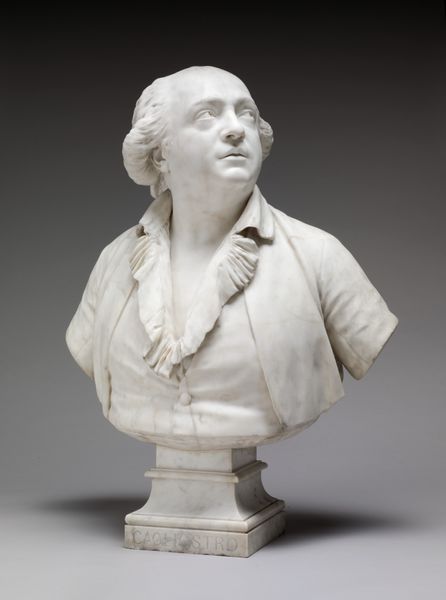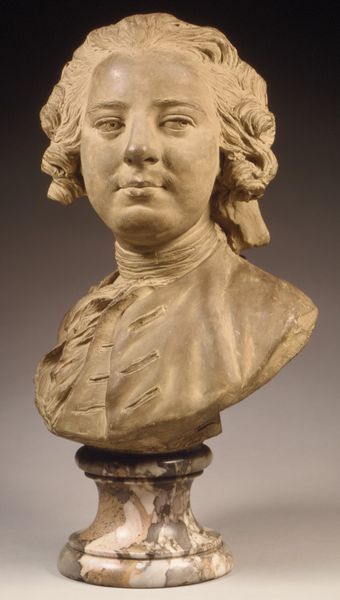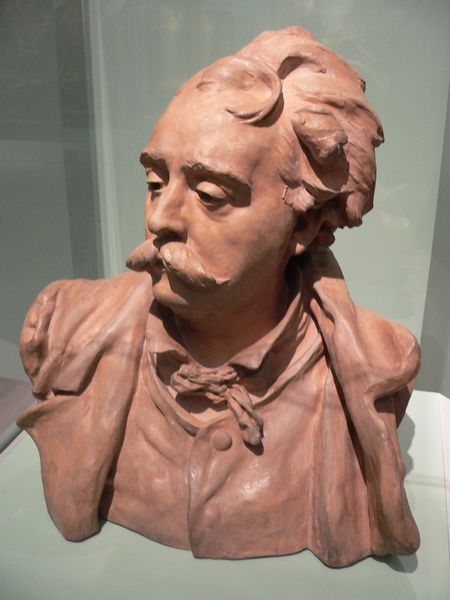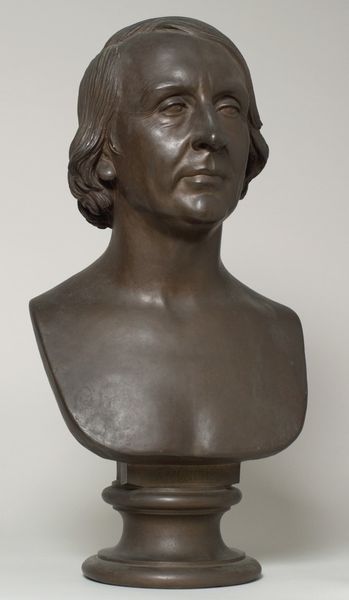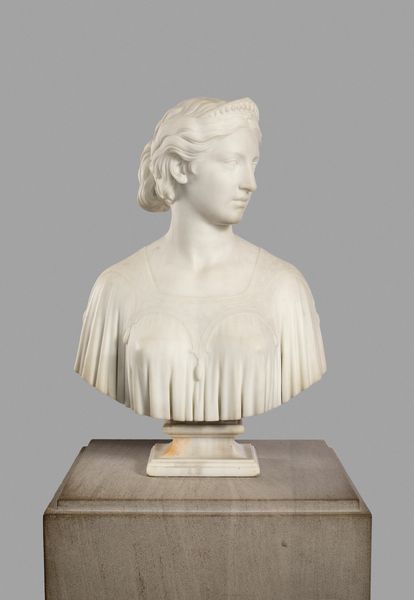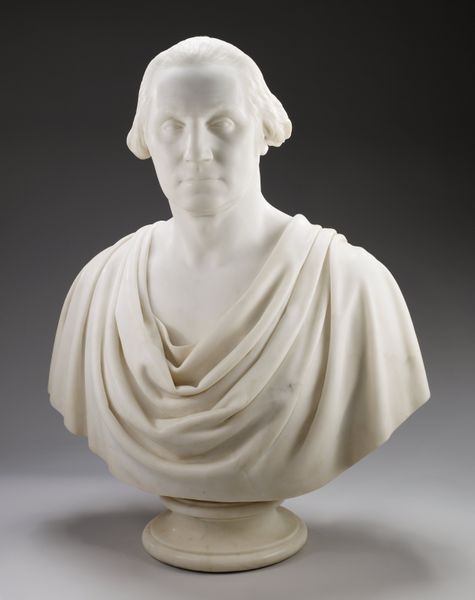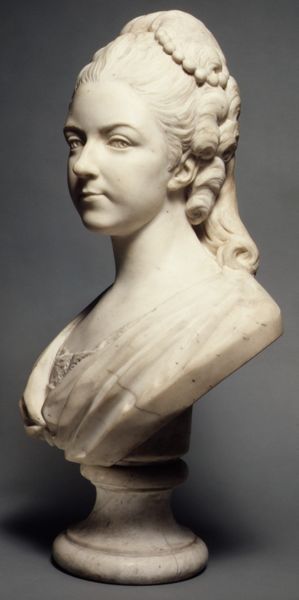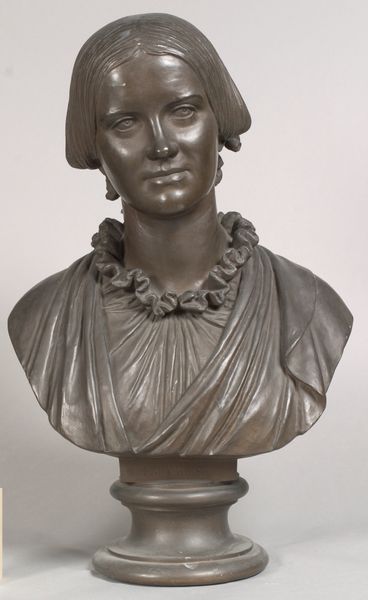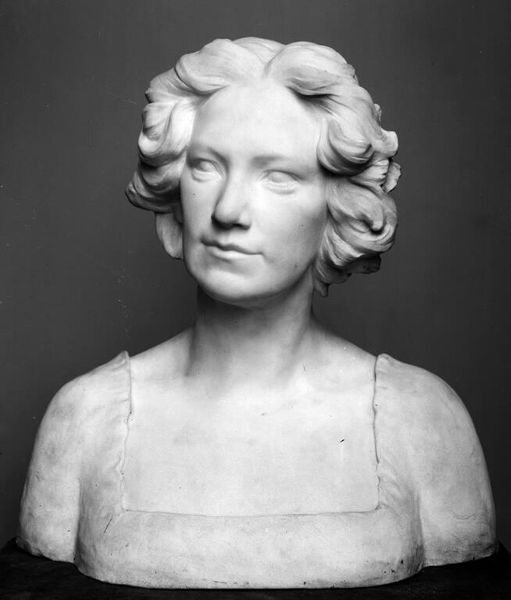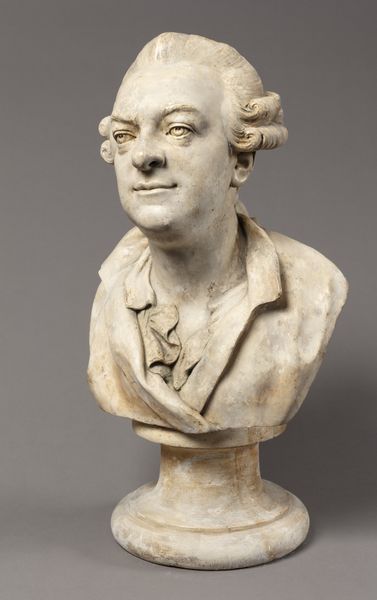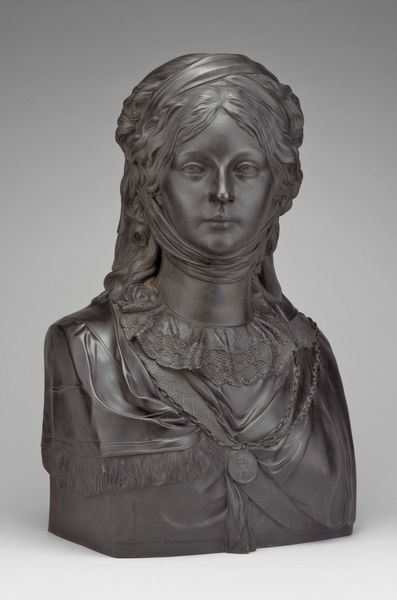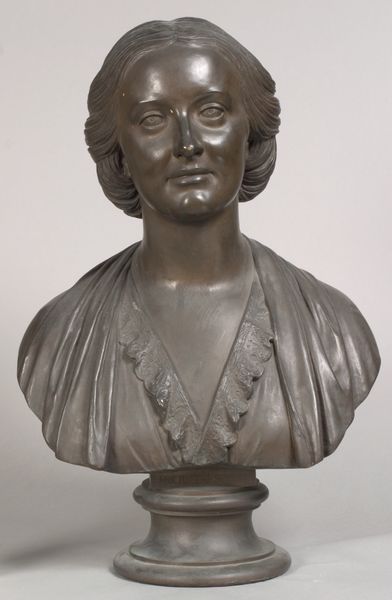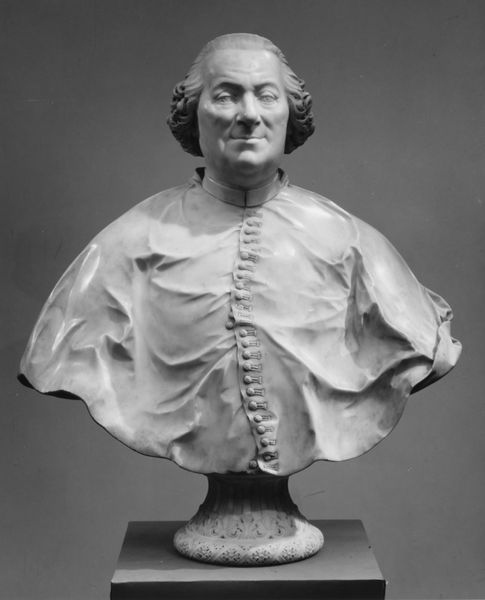
sculpture, marble
#
portrait
#
neoclacissism
#
statue
#
head
#
sculpture
#
form
#
sculpture
#
history-painting
#
marble
#
realism
#
statue
Copyright: Public domain
Jean-Antoine Houdon sculpted this marble bust of Cagliostro, a charismatic figure, sometime in the late 18th century. What immediately captures the eye is the texture and direction of light as it plays across the marble, giving life to the contours of Cagliostro's face and clothing. Houdon’s masterful use of light and shadow serves not just an aesthetic purpose but also a philosophical one. The chiaroscuro effect invites us to consider the Enlightenment era's obsession with reason and empirical observation. Cagliostro, a controversial mystic, embodies the tension between rationality and the occult. Houdon’s work, therefore, operates within a semiotic framework, where the texture and light serve as signs pointing to the broader cultural and philosophical debates of the time. The sculpture doesn’t just represent Cagliostro; it encapsulates an era grappling with new ways of thinking about knowledge, belief, and representation. Ultimately, Houdon’s portrait of Cagliostro becomes a site of ongoing interpretation, challenging fixed meanings and inviting us to question what we see and what we believe.
Comments
No comments
Be the first to comment and join the conversation on the ultimate creative platform.
